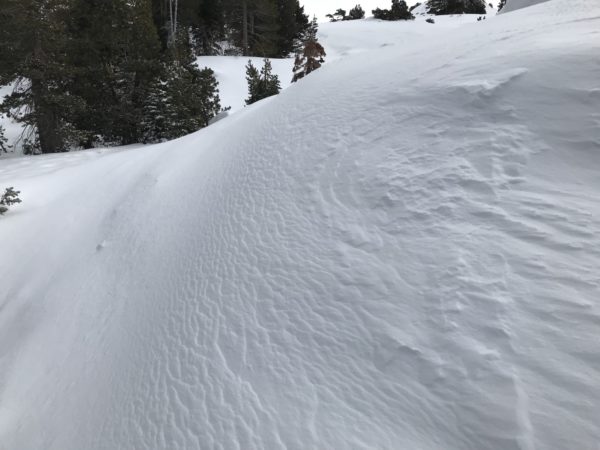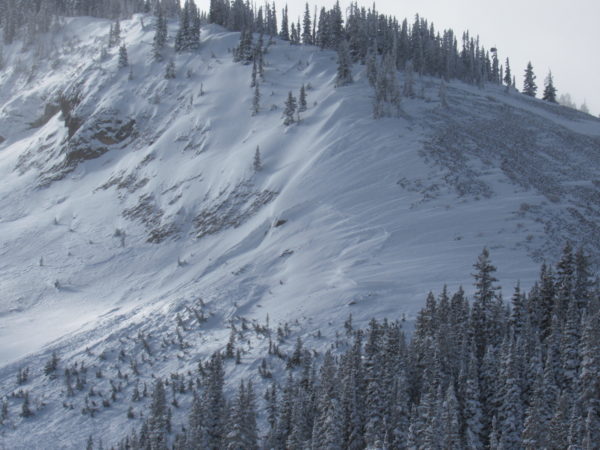Pillowy or lens-shaped slabs that form from wind loading. A feature of concern.
Fresh drifts indicate a recent wind loading event. The slabs left in the wake of a wind event can be unstable for several days or more. You can recognize and avoid troublesome drifted features by carefully observing the shape, feel, texture, and sound of the snow. Wind loading forms thick, dense drifts of snow that are often pillowy or lens-shaped. Look for smooth textures and rounded bulbs of snow to identify drifts. Feel for deeper or thicker deposits. Some firmer drifts sound hollow or drum-like. Drifts commonly form below cornices, in gullies, or behind terrain features such as rocks, tree fences, and rollovers that cause the wind to lose speed and deposit snow.

Drifts tend to be rounded, thicker, and smoother compared to surrounding snow textures. Credit: Sierra Avalanche Center

